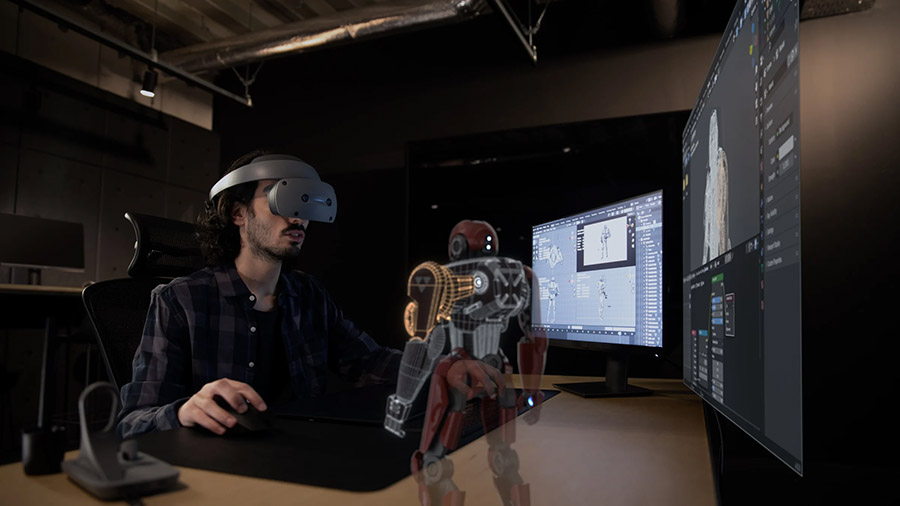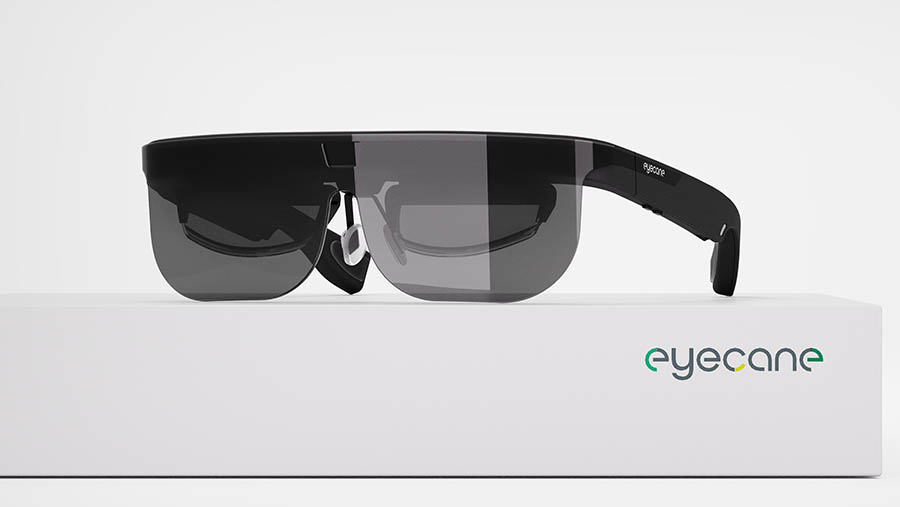Inside CES 2024
Spatial computing took over CES 2024 with smart glasses, headsets, and even desktop displays capturing the attention of attendees and media. Smart glasses with AR/XR/VR functionality were clearly the hot commodity in the virtual space, with a number of exciting prototypes and products on display.
Glasses Galore

One CES ’24 standout was the Xreal Air 2 Ultra smart glasses, available for pre-order now. Compatible with Samsung Galaxy S22 or S23, Air 2 Ultra features advanced capabilities like hand and head tracking, 6 DoF, plane detection, image tracking, and spatial anchor features. These innovations point towards the dominance of spatial computing, setting a solid foundation for technology development, including AR applications.
ASUS introduced the AirVision M1 glasses, offering mobile screen access discreetly while weighing a mere 60g. RayNeo X2 Lite, also at a feather-light weight, presents a micro-OLED full-color waveguide display and a 12MP tracking camera. The Vuzix Ultralite S caters to active users, seamlessly integrating spatial computing into athletic pursuits.
Sony Enters the Enterprise Space
Sony previewed an enterprise-focused XR headset with a unique pair of controllers, a handheld pointer, and a ring. Running on Android with the Qualcomm XR2+ Gen 2 chip and an 8K display, the headset facilitates natural interaction with the real environment. Notably, it is designed for 3D object interaction, enhancing the versatility of AR apps.

The Brelyon Ultra Reality Display, a curved 122” monitor, provides a virtual reality experience without a headset, using supersonic light-field expansion technology. While currently aimed at enterprise use, it holds potential for consumer availability, revolutionizing VR content consumption and arcade gaming experiences alike.
Aided by AR
Oculenz addressed vision loss caused by Advanced Macular Degeneration, using pixel manipulation to overlay high contrast images and increase visibility for afflicted users. EyeCane smart glasses by Cellico similarly aid vision-impaired users through a 4K camera that captures environmental images and repositions them in a virtual space. These devices showcase the positive impact of spatial computing in accessibility and aging.

Spurred on by the looming arrival of Apple Vision Pro, spatial computing not only dominated much of the CES 2024 hardware space but also rendered VR all but obsolete. Virtual reality has well and truly moved into a more AR-oriented phase that will shape the future of technology across various domains, from entertainment to innovation to accessibility.

